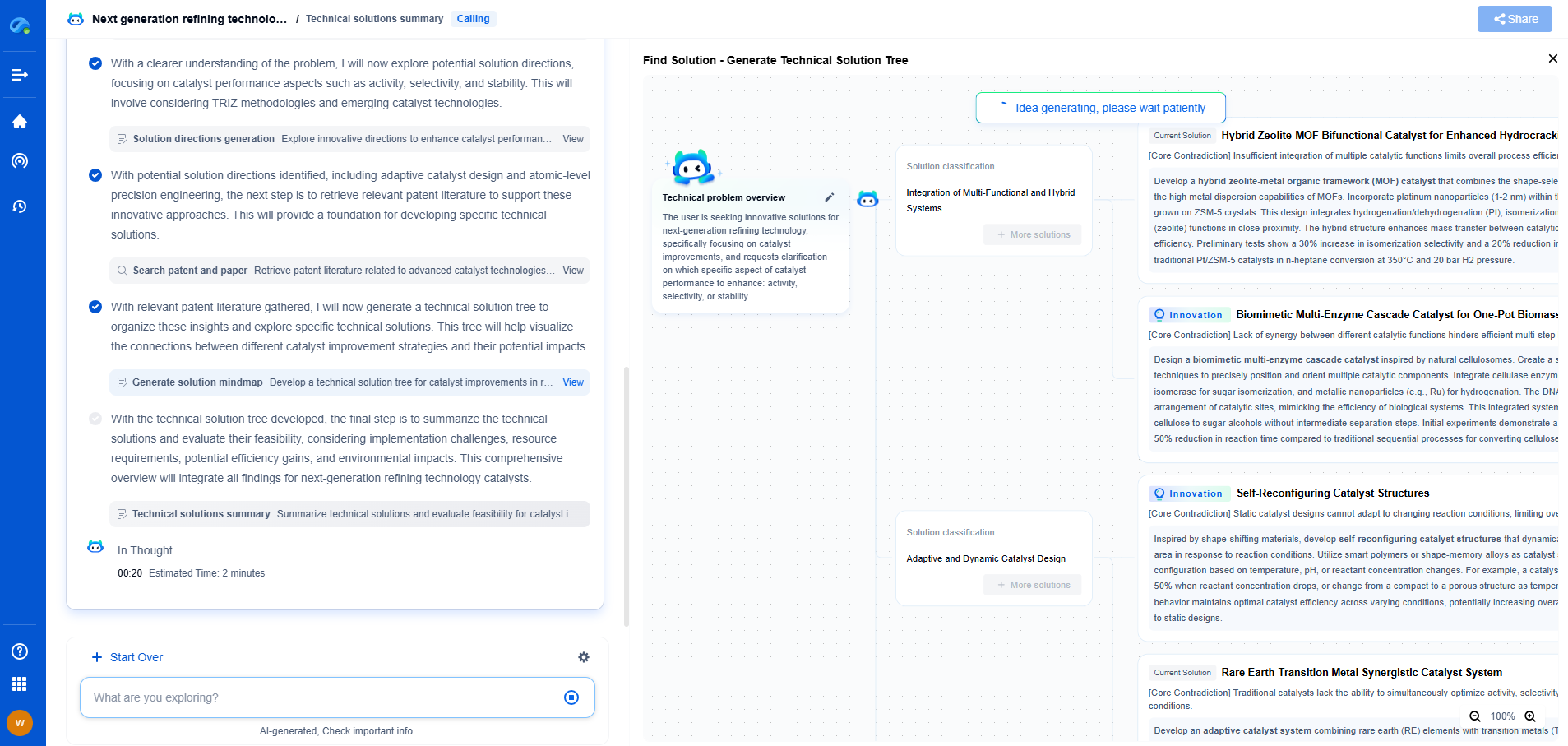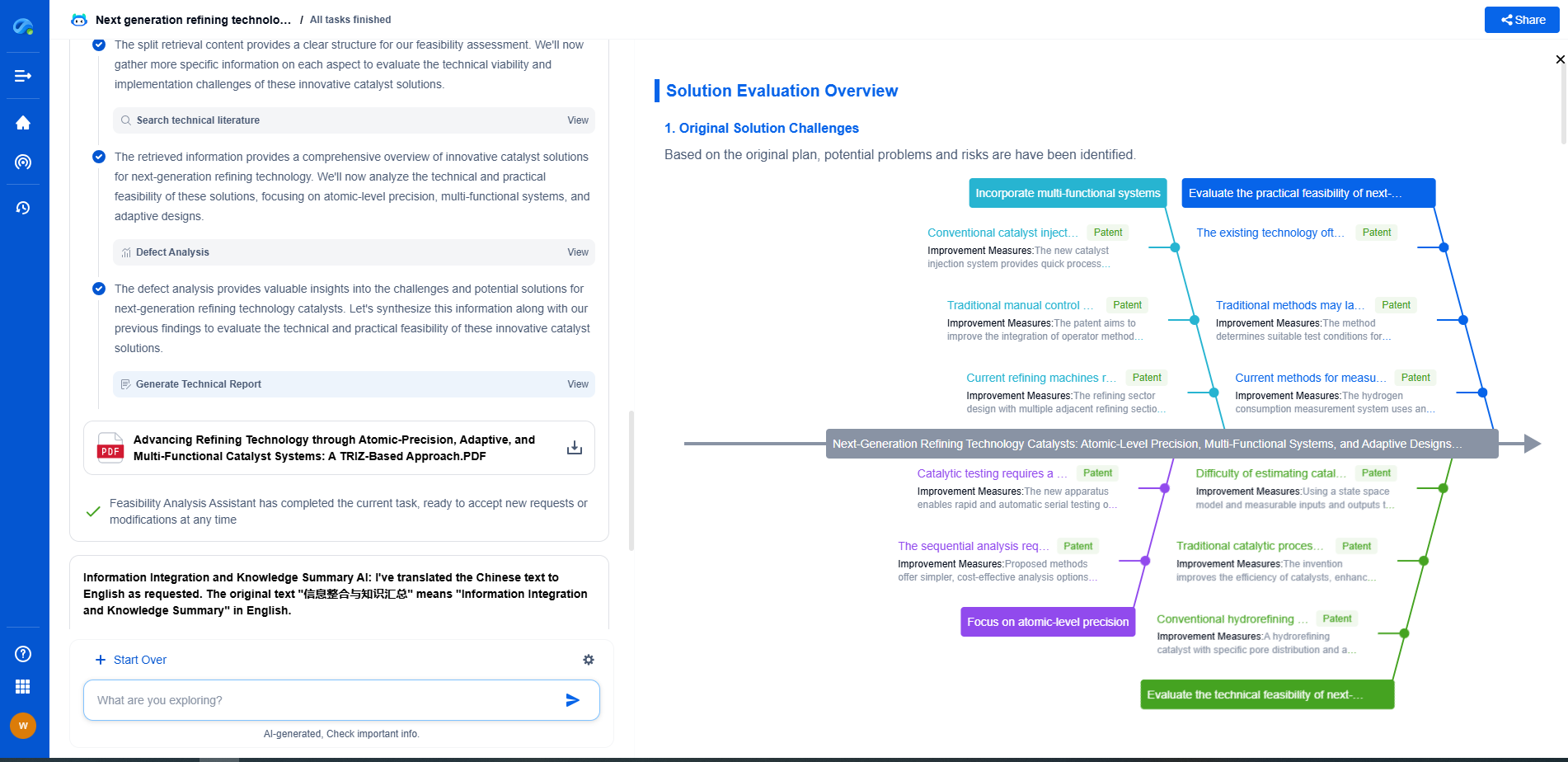What is the role of membrane filtration in wastewater treatment?
JUL 25, 2025 |
In the face of escalating environmental concerns and stricter regulatory standards, effective wastewater treatment is more crucial than ever. Among the myriad of techniques employed for this purpose, membrane filtration has emerged as a key player, offering a range of benefits that enhance the efficiency and effectiveness of wastewater treatment processes. This article explores the role of membrane filtration in wastewater treatment, outlining its principles, types, advantages, and challenges.
Understanding Membrane Filtration
Membrane filtration is a physical separation process that uses a semi-permeable membrane to remove particles, microorganisms, and other contaminants from water. The process hinges on the ability of the membrane to allow certain substances, such as water molecules, to pass through while retaining others. This selective permeability makes it an invaluable tool in the quest for cleaner water.
Types of Membrane Filtration
There are several types of membrane filtration, each with its specific applications and advantages:
1. Microfiltration (MF): This process uses membranes with larger pore sizes to remove suspended solids and bacteria from wastewater. It is typically employed as a pre-treatment step in more comprehensive filtration processes.
2. Ultrafiltration (UF): With smaller pore sizes than microfiltration, UF membranes can remove viruses and other smaller microorganisms. Ultrafiltration is often used for protein concentration and wastewater reclamation.
3. Nanofiltration (NF): NF membranes have even smaller pores, capable of removing multivalent ions and organic molecules. This makes it suitable for applications like softening water and removing color and odor.
4. Reverse Osmosis (RO): The finest form of membrane filtration, RO, can remove almost all contaminants, including ions and dissolved solids, making it ideal for desalination and producing high-purity water.
Advantages of Membrane Filtration
Membrane filtration offers several advantages over conventional wastewater treatment methods:
1. High Efficiency: Membrane processes can achieve high levels of contaminant removal, resulting in significantly cleaner effluent.
2. Reduced Chemical Use: Unlike chemical treatment methods, membrane filtration often requires fewer chemicals, reducing the environmental impact and operational costs.
3. Space Saving: Membrane systems usually have a smaller footprint compared to traditional treatment plants, making them suitable for urban or space-constrained areas.
4. Scalability: Membrane filtration systems can be easily scaled up or down, allowing for flexible adaptation to varying wastewater volumes and treatment needs.
Challenges and Considerations
Despite its numerous benefits, membrane filtration is not without its challenges:
1. Fouling: Membrane fouling, caused by the accumulation of particles on the membrane surface, can lead to decreased efficiency and increased maintenance costs. Regular cleaning and proper pre-treatment are essential to mitigate this issue.
2. Cost: The initial investment for membrane systems can be high, although this is often offset by lower operational costs over time.
3. Energy Consumption: Some membrane processes, particularly reverse osmosis, can be energy-intensive, necessitating the development of more energy-efficient systems.
Future Perspectives
As technology advances, membrane filtration is poised to become an even more integral part of wastewater treatment. Innovations such as improved membrane materials, energy recovery systems, and smarter process control are expected to enhance performance and reduce costs. Moreover, the growing emphasis on sustainable water management and resource recovery will continue to drive demand for membrane-based technologies.
Conclusion
Membrane filtration plays a vital role in modern wastewater treatment, offering an effective, efficient, and flexible solution for removing a wide range of contaminants. While challenges such as fouling and energy consumption remain, ongoing technological advancements promise to further enhance the capabilities and cost-effectiveness of membrane filtration systems. As we look to the future, the continued evolution of this technology will be essential in addressing the growing demand for clean water and sustainable wastewater management solutions.
From next-generation membrane materials to high-efficiency separation processes for pharmaceuticals, water treatment, food processing, or energy systems, the filtration & separation industry is rapidly evolving with a surge in material innovation, microstructure design, and process optimization.
Patsnap Eureka, our intelligent AI assistant built for R&D professionals in high-tech sectors, empowers you with real-time expert-level analysis, technology roadmap exploration, and strategic mapping of core patents—all within a seamless, user-friendly interface.
Whether you're designing the next high-throughput filter, optimizing nanostructured surfaces, or exploring new separation media for emerging industries—Patsnap Eureka gives you AI-driven insights in seconds, helping you move from ideation to innovation with confidence.
🚀 Start your free trial today and experience how Eureka transforms filtration innovation—from reactive to predictive.
- R&D
- Intellectual Property
- Life Sciences
- Materials
- Tech Scout
- Unparalleled Data Quality
- Higher Quality Content
- 60% Fewer Hallucinations
Browse by: Latest US Patents, China's latest patents, Technical Efficacy Thesaurus, Application Domain, Technology Topic, Popular Technical Reports.
© 2025 PatSnap. All rights reserved.Legal|Privacy policy|Modern Slavery Act Transparency Statement|Sitemap|About US| Contact US: help@patsnap.com

